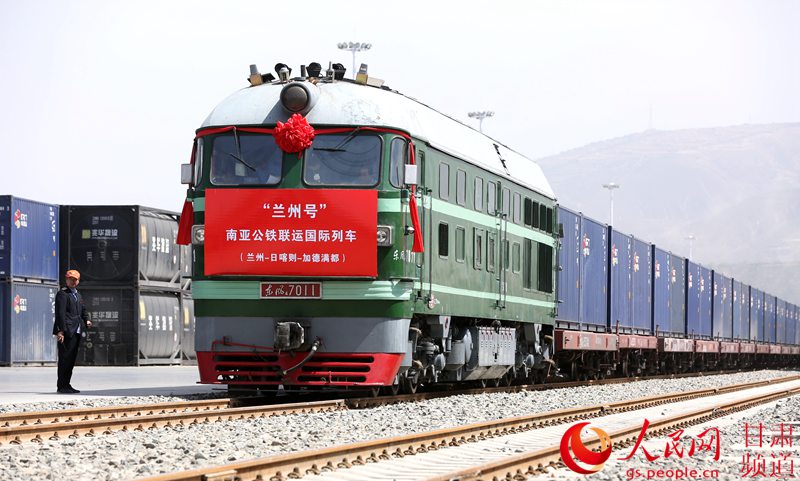Nepal, BRI and the debt-trap diplomacy argument
- By Ritu Raj Subedi
 0 Comment(s)
0 Comment(s) Print
Print E-mail China.org.cn, December 11, 2018
E-mail China.org.cn, December 11, 2018

Nepal is a latecomer to China's Belt and Road Initiative (BRI) unveiled in 2013. Having only signed a Memorandum of Understanding in May last year. This is a reason why both countries are yet to select any projects to be constructed under the BRI framework.
However, there is a growing impatience with this delay in projects expected to boost infrastructure development, and create much-needed jobs and economic growth. There is another genuine fear – whether the BRI projects end up getting 'killed' before they actually take off.
The Western and India media have invoked the so-called "debt trap diplomacy," scaring Nepal into dragging its feet over taking on any BRI projects.
These media claim China is pushing the BRI as a geopolitical instrument to trap poor and developing nations into an inescapable debt, and obtaining undue benefits from them. Coming under the negative influence of such propaganda, some Nepalese individuals are buying into this argument and are engaged in misleading the public.
They are blowing the issue out of proportion at a time when there is suspicion that undue geopolitical pressure is behind the inordinate delay in giving momentum to BRI projects. This requires that Nepal and China should build greater political trust, and work in close coordination to choose suitable projects without delay.
Rong Ying, vice president at the China Institute of International Studies, has said: "It's not good to politicize BRI projects. As Nepal joined the BRI very late, the delay in selecting projects is not necessarily a matter of serious concern. Both nations should go through proper procedures - feasibility study, identification of projects and financial modality before deciding."
Rong urged the Nepalese side to create a general business atmosphere by resolving issues related to laws, regulations, accession, land acquisition and basic facilities, among others.
The detractors – or distracters - also go on to argue that Nepal is not included in the BRI guide map, and that is why the projects have not achieved any momentum. To such sceptics, Ye Hailin, director of the Centre for South Asia Studies, offers a straight answer: "The Chinese government has not officially prepared any BRI map. Some have published their map for their own convenience but the official BRI white paper has clearly spelt out the involvement of Nepal."
Some fault-finders claim Nepal could fall into the debt trap should it build the multi-billion-dollar Kerung-Kathmandu railway based on Chinese loans.
However, that doesn't hold water because the railway is a commercially viable project. The Chinese government does not invest in projects that do not have good economic prospects and that are not sustainable.
A Chinese team had already conducted a technical study and both sides are in process of preparing the necessary Detailed Project Report (DPR).
Once completed, the ambitious railway project will revolutionize connectivity between the two nations separated by the giant Himalayan snow-capped mountains. It will not only open new avenues of trade, cooperation and people-to-people relations, but will also reduce Nepal's dependency on India for a third country trade route, as both nations have already signed pacts allowing Nepal to access international waters via the Chinese territory.
Professor Zhu Caihua, deputy director of the Chinese Academy of International Trade and Economic Cooperation, offers reasonable answer to those involved in hyping the bogeyman of the "debt trap" theory.
He says: "Actually, the term 'debt' is a useful term in economy. It is irrelevant to say it is good or bad in itself. The main thing is how you utilize it. If you spend debt judiciously for economic development, it will enable the government to raise taxes and increase national wealth, thereby improving people's livelihood."
China's own history of economic development defies the so-called debt-trap logic. It started reform and opening up 40 years ago. It secured loans from the World Bank and International Monetary Fund, and invested them in massive industrialization. Now, it has become the world's second largest economy.
Since China has itself achieved mesmerizing economic growth by taking loans from the international financial organizations, how can it go to the extent of ensnaring other nations into debt?
China has made huge investment in Latin America and Africa but it has not pushed them into a debt trap.
Some are depicting the China-Pakistan Economic Corridor (CPEC) in a negative light, without describing the economic benefits it has brought to Pakistanis. Started in 2013, the US$60 billion CPEC has created 75,000 jobs and the number is likely to increase 10-fold in the next 15 years.
After achieving political stability, Nepal's government aspires to realize its grand vision of "Prosperous Nepal, Happy Nepalis" through rapid and inclusive economic development, and it sees the BRI as a viable means to attain this lofty goal.
Ritu Raj Subedi is an associate editor of The Rising Nepal.
Opinion articles reflect the views of their authors, not necessarily those of China.org.cn.





